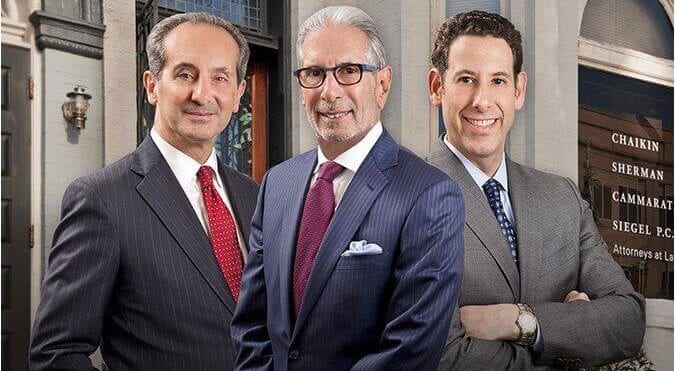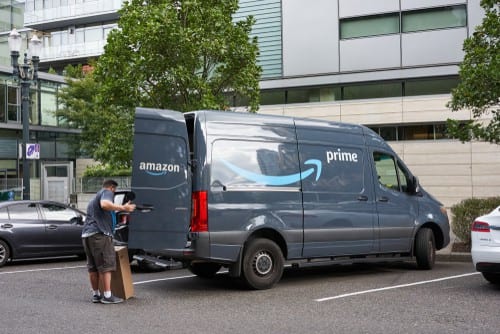Unsafe Working Conditions Have Resulted in Catastrophic and Sometimes Deadly Accidents
Online shopping has become an essential part of the holiday season, with consumers relying on the variety offered by internet retailers and fast, often free, shipping to find the perfect gift. New reporting by ProPublica and Buzzfeed digs into the other side of the story. While Amazon, the biggest online retailer in the U.S., promises free two-day (and in some territories, one-day) shipping, they do so by pushing drivers and the contractors who employ them to their limits.
The Rise of a Distributed Empire
Amazon used to send their packages through USPS and FedEx, but late deliveries, and perhaps higher prices, compelled them to put together their own network for distribution. Rather than working with high-profile national shipping companies, they found a collection of small, local businesses to cover their “last mile” shipping needs.
They pitched entrepreneurs with the opportunity to make money by moving into logistics, promising contracts to anyone who could deliver Amazon packages faster, for lower prices. Small businesses popped up in many locations, eager for their slice of the pie. Now those companies are facing large expenses: Amazon’s fast-paced delivery standards have been behind many car accidents, some fatal. Buzzfeed found documents detailing more than 60 serious crashes, and at least 13 deaths, caused by Amazon delivery drivers. Even worse, Amazon itself refuses to pay damages to any of the victims or their survivors.
Savings Always Come at a Cost
Accidents resulting in catastrophic or even fatal injuries haven’t gone unnoticed by Amazon. The company has sought to improve safety more than once. Teams have been hired and expert recommendations requested and delivered. However, these attempts have ended in changes to the safety team rather than to company practices.
In 2013, amidst Amazon’s first foray into the delivery world, a white paper suggested security measures including:
- Driver pay based on package deliveries, not delivery route
- Caps on the number of packages per route
The paper suggested these changes would only cost around 4 cents per package. The logistics and operations chief at the time (now a senior VP) turned the proposal down.
Three years later, Amazon brought in a former FedEx employee to look at their safety practices and propose changes to protect drivers and pedestrians. According to reports, she spent more time being interrupted than being listened to. Her suggestions seemed prudent; they included:
- Random drug tests
- Drive shifts that leave room for travel time
- Enforcement of Amazon’s mandate that contractors provide workers’ compensation insurance, paid rest breaks, and legally mandated overtime
However, coming into the holiday season, Amazon couldn’t afford to make changes that would result in fewer drivers and slower routes. The employee who suggested the adjustments quit, and the head of her team was pushed out of the company.
Contractors also had another problem in implementing training and safety practices: Amazon constantly slashed their rates, causing cutbacks that affected everything from driver monitoring systems to workers’ compensation insurance. These choices have endangered both the drivers and anyone along their path as they drop packages on doorsteps. The driver is the only safety control—and torn between the likelihood of losing their job if they don’t meet Amazon’s delivery standards or the possibility of an accident, most opt for the latter.
The Liability Problem
Among Amazon’s money-saving methods was the idea to outsource not only delivery but also liability. Any operation that includes drivers has a high likelihood of facing expensive insurance claims. To ensure the contractors would bear these costs, Amazon included in their agreement a clause that indemnified them from all claims filed against delivery drivers. In fact, were Amazon taken to court, the contract specified they could recover all legal costs from the company under whom the accident occurred. Victims have found this limitation a frustration while trying to receive compensation for their injuries and losses.
The expenses that result from car accidents can climb into the hundreds of thousands when victims need expensive surgeries and/or ongoing care. A corporation like Amazon would be able to write a check for that amount without even seeing a dip in its bank accounts. However, for the local companies and insurers forced to answer these claims on their own, these expenses may be insurmountable. Small businesses can be bankrupted by one accident, leaving the victim with a settlement much smaller than they deserve.
Protecting Yourself Against Dangerous Amazon Delivery Drivers
Our team at Chaikin, Sherman, Cammarata & Seigel, P.C. is here to protect you to the full extent of the law after a car accident. Amazon’s continued disregard for safety is affecting employees and other civilians alike. Anyone injured in a delivery van accident deserves the chance to recover full compensation.
If you or a loved one have been in a car accident, especially one that caused severe or permanent injuries, don’t let Amazon’s legal posturing scare you out of bringing a lawsuit. We know how difficult and pointless the settlement process can seem. Our lawyers are here to help you negotiate for the settlement you deserve. Chaikin, Sherman, Cammarata & Siegel, P.C. is proud to work accident victims to give them a voice against multinational corporations. We will fight for you every step of the way.
Were you involved in a crash with an Amazon delivery van or another commercial vehicle? Contact us online or call (202) 659-8600 to see if you’re eligible to file a lawsuit.


